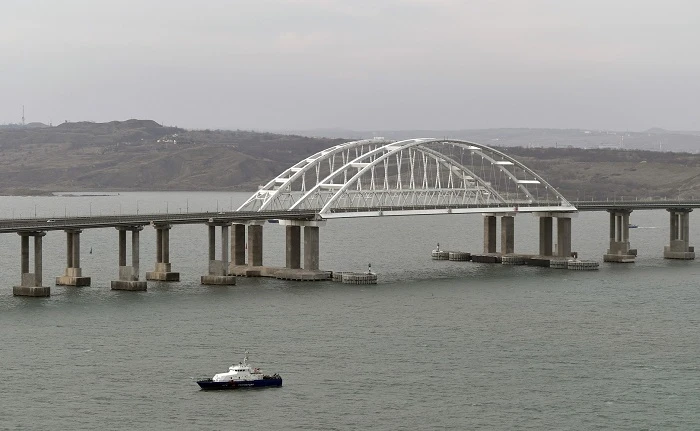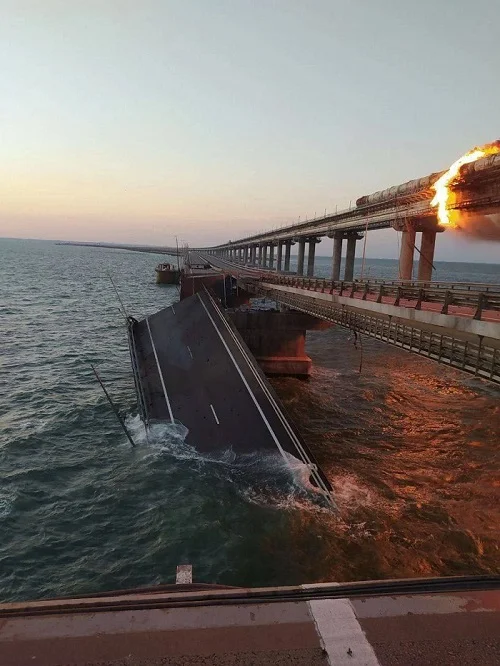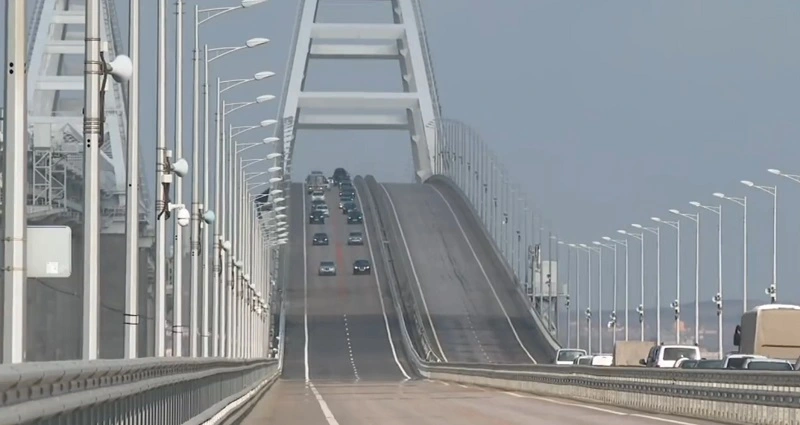Moscow has announced the full reopening of motorway traffic on the Crimean bridge that connects Russia to the erstwhile Ukrainian peninsula and had partially collapsed due to an explosion, last October.
The strategic 19 km bridge, which starts on the Taman Peninsula, is the longest in Russia and Europe, running along a 5 km long dam and Tuzla Island, crossing the Kerch Strait and ending on the Crimean coast.

Russia’s Federal Road Transport Agency, also known as Rosavtodor, said that it was initially planned to launch vehicles on both sides of the Crimean bridge on April 3, 2023. But all the work was completed in 4.5 months, more than a month ahead of schedule.
Quite significantly, the opening of the passage took place on the eve of the first anniversary of the Russia-Ukraine conflict.
🔹Крымский мост, который был поврежден в результате удара Украины в октябре 2022 года, вновь открыт для автомобильного движения. pic.twitter.com/jkjIWY6QKV
— Yeni Şafak на русском (@yenisafak_ru) February 24, 2023
Rosavtodor revealed that first, specialists restored the right side of the road. For this, four damaged spans were replaced, the assembly of which required more than 1,200 tonnes of metal structures.
Then, the road workers laid asphalt concrete, applied markings, restored lighting and a barrier fence. As a result, traffic on the right side was opened on December 5.
Russian President Vladimir Putin drove over the Crimea Bridge between Russia and Ukraine on Monday, just two months after it was damaged in an explosion. pic.twitter.com/xkSojHPBPT
— Newsweek (@Newsweek) December 5, 2022
On the left, the less damaged side of the bridge, damaged spans were also dismantled and new spans were installed, new lighting masts were mounted and asphalt concrete was laid.

During peak hours, as many as 500 people worked on the restoration of the road part.
It also stated that the bridge was restored by the whole of Russia with the metal produced by factories from three regions.
The project was developed in Saint Petersburg and people from all over the country participated in the work on the bridge from producing materials, transporting them to the bridge crossing, and ensuring safety at all stages of recovery.




















